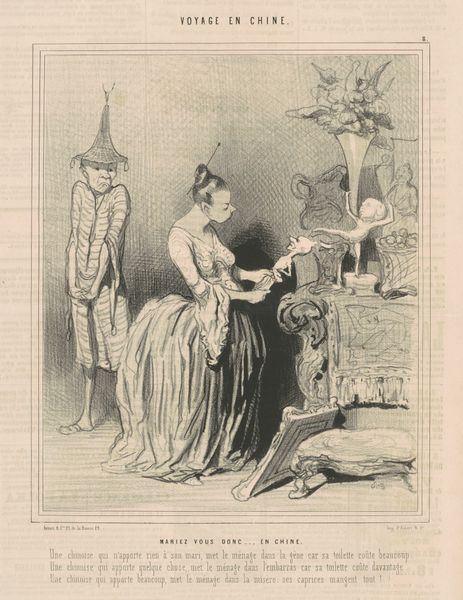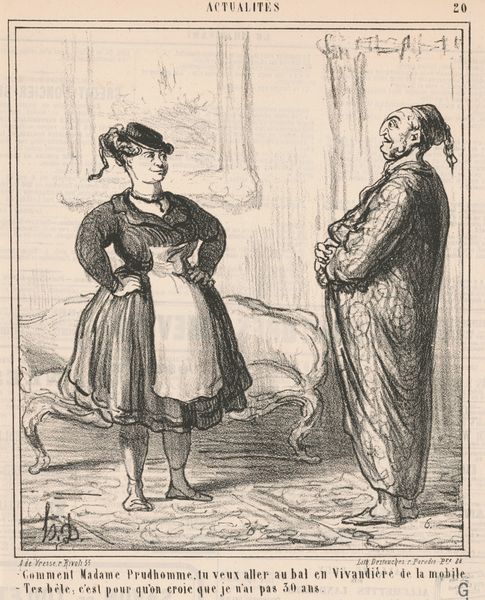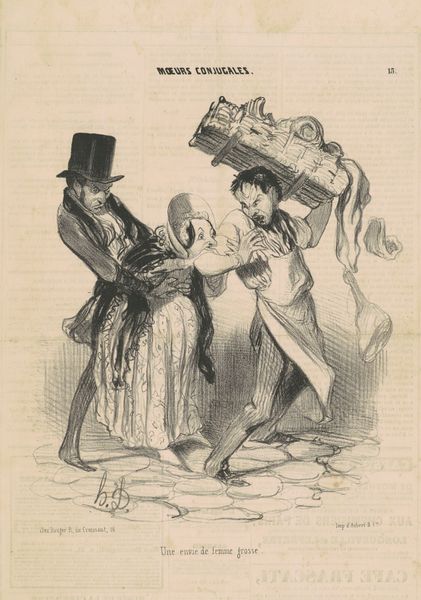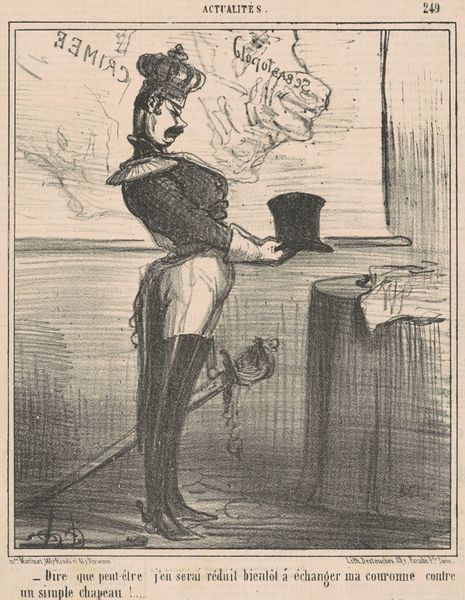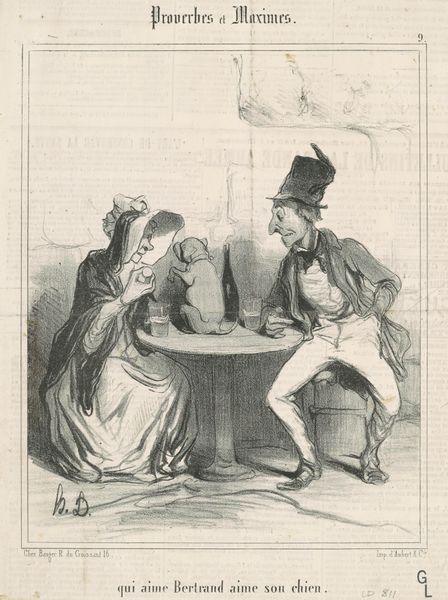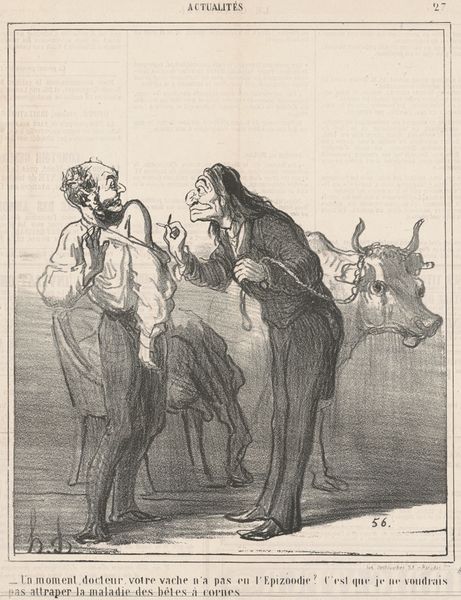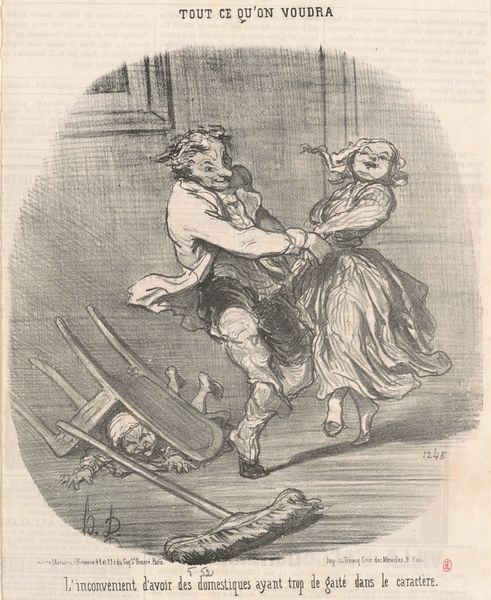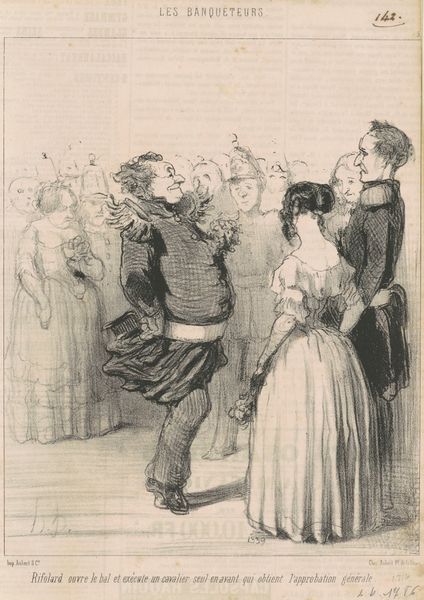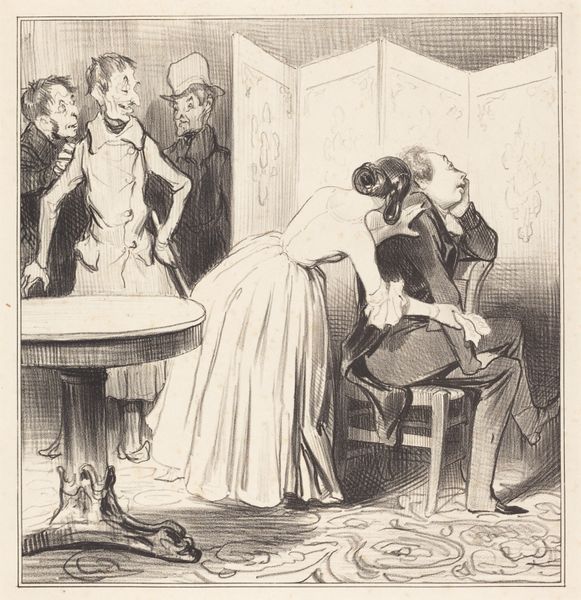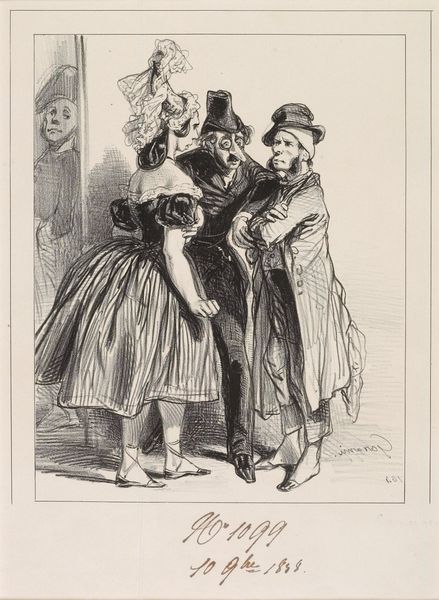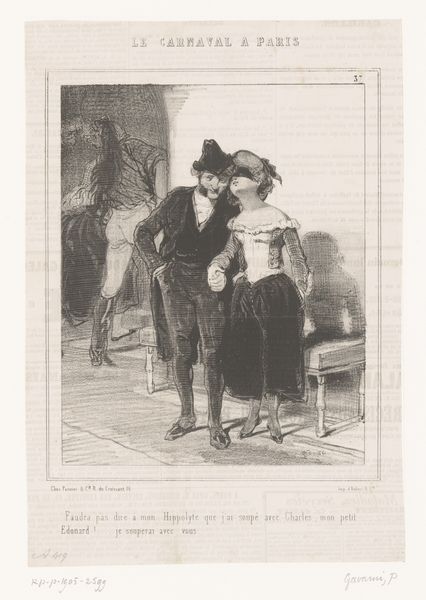
lithograph, print
#
lithograph
# print
#
caricature
#
romanticism
#
genre-painting
Copyright: National Gallery of Art: CC0 1.0
Curator: The first thing that strikes me is the title "Déesse mais pas fière" – "Goddess, but not Proud." This lithograph by Honoré Daumier, created around the 19th century, feels ripe for interpretation. The woman, clearly adorned as a sort of celestial being with floral headpiece and small wings, seems rather preoccupied with… a toothpick? Editor: It’s such a sharply rendered critique, isn’t it? The contrast between her ostensible grandeur and the very human, somewhat unglamorous act of picking her teeth immediately deflates the notion of a "goddess." I’m interested in how Daumier uses caricature here, a style deeply interwoven with social and political commentary. The romanticism of her costume clashes wonderfully with the rather pedestrian scene. Curator: Absolutely. It's almost as if Daumier is offering a tongue-in-cheek commentary on the artificiality of theatrical performance itself. She’s caught “backstage” if you will, behind the illusion, just as imperfect as anyone else. And what about the man to her left? The officer holding a small cup or glass...What symbolism might be at play there, in this seemingly quiet moment of social exchange? Editor: To me, that man symbolizes a certain authority – perhaps the male gaze itself – witnessing and, to some extent, judging this fallen "goddess." The act of picking teeth can be interpreted as an unintentional disrobing; by demystifying the female spectacle, Daumier touches upon the power dynamics and societal expectations around beauty, gender, and class. What power structures do they illuminate through contrast? The artist places her beside this person that’s almost comically authoritarian, an unshakeable figure looming over this scene. Curator: That contrast highlights the precarious nature of status and performance, in particular of female identity. It's so wonderfully irreverent and biting. He shows that even those who are put on a pedestal – literally in a theatrical sense – are subject to very human realities. Daumier uses it all to create this vivid depiction that almost foreshadows celebrity culture now, centuries after the work itself has been displayed. Editor: Yes! And let's remember the social and political turbulence of 19th-century France, which certainly informs his critiques of the elite and their pretensions. There is this great connection to be found in linking Daumier to the work of later figures as well, figures like Coco Fusco and Guillermo Gomez Pena in the present day! They used that same artistic disruption you find echoed in Daumier’s critique. Curator: Looking at this image has given me new perspectives, showing the deeper emotional implications around what’s depicted and their relevance in our modern world. I came here intrigued by an historical relic but am now going home wondering if our own culture reflects these timeless insights! Editor: Me too! I walk away wondering how artists challenge our preconceived ideas, and can we find some space for societal shifts. Can one piece create change? I think Daumier argues the possibilities are worth exploring.
Comments
No comments
Be the first to comment and join the conversation on the ultimate creative platform.
